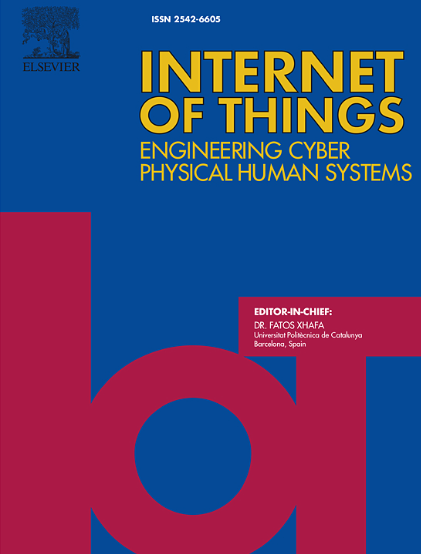Securing constrained IoT systems: A lightweight machine learning approach for anomaly detection and prevention
IF 6
3区 计算机科学
Q1 COMPUTER SCIENCE, INFORMATION SYSTEMS
引用次数: 0
Abstract
With the advent of advanced technological developments such as IoT, edge, and fog computing, cyber attacks have become increasingly sophisticated. IoT networks facilitate collaborative and intelligent tasks across various domains, including Industry 4.0, digital healthcare, and home automation. However, the proliferation of IoT devices has raised concerns about severe attacks, particularly those targeting resource constraints such as energy and memory. In response to these challenges, Tiny Machine Learning (TinyML) has emerged as a new research area, focusing on machine learning techniques tailored for embedded and IoT systems. This study proposes an ML detection mechanism designed to categorize and detect resource-constrained attacks in IoT devices. We consider IoT devices to be integral components within the continuum of edge and cloud computing, leveraging EdgeML and CloudML for detection purposes. Our paper conducts a comparative analysis of ML models, with a specific focus on energy consumption and memory usage in IoT applications. We compare various ML methodologies, including cloud-based, edge-based, and device-based strategies for both training and detection. The evaluation encompasses the application of these ML techniques to petite IoT devices, utilizing TinyML, as well as cloud and edge devices. Our findings reveal that the Decision Tree algorithm deployed on smart devices surpasses other approaches in terms of training efficiency, resource utilization, and the ability to detect resource-constrained attacks on IoT devices. We demonstrate a high level of accuracy, exceeding 96.9%, across all presented ML models in detecting resource constraint attacks within IoT systems. In summary, this research serves as a guide for implementing effective security measures in the dynamic landscape of IoT and associated technologies.
确保受限物联网系统的安全:异常检测和预防的轻量级机器学习方法
随着物联网、边缘和雾计算等先进技术的发展,网络攻击变得越来越复杂。物联网网络促进了各个领域的协作和智能任务,包括工业 4.0、数字医疗和家庭自动化。然而,物联网设备的激增引发了对严重攻击的担忧,特别是那些针对能源和内存等资源限制的攻击。为了应对这些挑战,微型机器学习(TinyML)已成为一个新的研究领域,其重点是为嵌入式和物联网系统量身定制的机器学习技术。本研究提出了一种 ML 检测机制,旨在对物联网设备中的资源受限攻击进行分类和检测。我们将物联网设备视为边缘计算和云计算连续体中不可分割的组成部分,利用 EdgeML 和 CloudML 进行检测。我们的论文对 ML 模型进行了比较分析,重点关注物联网应用中的能耗和内存使用情况。我们比较了各种 ML 方法,包括基于云、基于边缘和基于设备的训练和检测策略。评估包括将这些 ML 技术应用于使用 TinyML 的小型物联网设备以及云和边缘设备。我们的研究结果表明,部署在智能设备上的决策树算法在训练效率、资源利用率以及检测物联网设备上资源受限攻击的能力方面都优于其他方法。在检测物联网系统中的资源受限攻击方面,我们展示了所有提出的 ML 模型的高准确率,超过 96.9%。总之,这项研究为在物联网及相关技术的动态环境中实施有效的安全措施提供了指导。
本文章由计算机程序翻译,如有差异,请以英文原文为准。
求助全文
约1分钟内获得全文
求助全文
来源期刊

Internet of Things
Multiple-
CiteScore
3.60
自引率
5.10%
发文量
115
审稿时长
37 days
期刊介绍:
Internet of Things; Engineering Cyber Physical Human Systems is a comprehensive journal encouraging cross collaboration between researchers, engineers and practitioners in the field of IoT & Cyber Physical Human Systems. The journal offers a unique platform to exchange scientific information on the entire breadth of technology, science, and societal applications of the IoT.
The journal will place a high priority on timely publication, and provide a home for high quality.
Furthermore, IOT is interested in publishing topical Special Issues on any aspect of IOT.
 求助内容:
求助内容: 应助结果提醒方式:
应助结果提醒方式:


